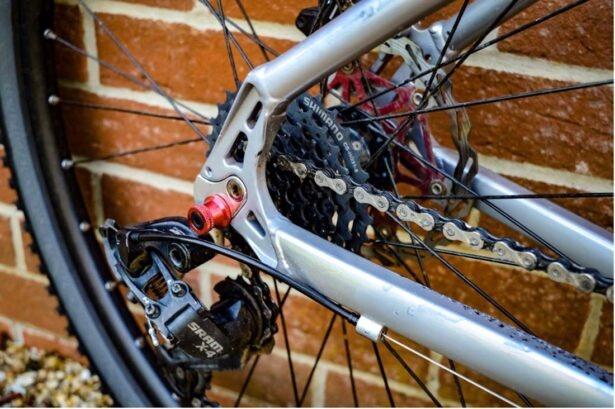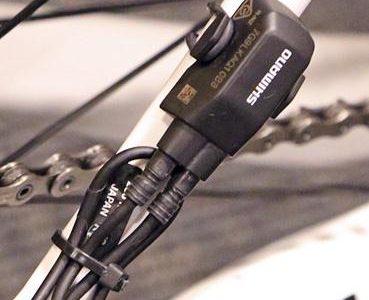When you start cycling, it’s easy to forget that you have to keep on top of bike maintenance, and it can be challenging if you are unsure what you need to be looking for. It takes a while to pick up what noises and feelings mean and what will need replacing on the bike because of them.
A common question we are often asked is how you know when your chain and cassette are worn out. These being vital bits of your drivetrain need to be very looked after for many reasons such as performance and safety.
In this article, we’re going to tell you how you can tell if your bike requires a new cassette or chain.
How long do Chains last?
Obviously, depending on different brands, different types of riding, or even levels of performance, a chain’s life will differ. Typically though, as a rough estimate, I would expect 1500 miles from a chain before it would need changing.
Using a good brand like Shimano or SRAM will also give you more life in your chain.
How long do Cassettes last?
Again with cassettes, it does depend on brand, riding, and level of performance.
Cassettes will last longer than chains, but the duration of a cassette’s life completely changes depending on how well you keep on top of your chain. If you are running a well-worn chain, it will hugely impact the life of a cassette.
If you change your chain every 1500 miles, you can expect a cassette to last around three chains which will be 4500. If you don’t change your chain, you may only see 3000 miles out of a cassette.
How do you know when a Chain and Cassette are worn?
 The best way to tell if these components are worn is to break them down separately so you don’t end up spending unnecessary money that you don’t need either, as they both don’t always need to be changed.
The best way to tell if these components are worn is to break them down separately so you don’t end up spending unnecessary money that you don’t need either, as they both don’t always need to be changed.
How to tell you the chain is worn?
Chain Checker
Using a chain checker is the first way you can tell if your chain needs replacing. A chain checker is a device that measures the amount of stretch on the chain.
Depending on the speeds, a chain should be changed after it has stretched 0.5% to 0.75% on the park tools checker. These figures can differ between brands and speeds heavily though.
Pull Test
The pull test is when you stand beside your bike and pull the chain forward on the front chainring. If the chain barely moves, then it typically is ok.
If you are pulling it forward more than about 5mm, it is going to need to be checked and will probably need changing.
Chain Breaks
If your chain breaks, there’s a very good chance that it’s getting weak and will need replacing soon.
Although a quick link will get you home, it’s not advisable to continue riding for many miles as there’s a good chance it will happen again, and it can be very dangerous as it’s very easy to fall off when this happens.
How to tell you the cassette is worn?
New Chain
The easiest way to see if your cassette needs changing is to change the chain, and if it skips, you will typically need a new cassette or even chainrings. Cassettes and the chain wear together, but when the cassette passes a certain point, it cannot bond with the new chain.
Visual Check
Although this isn’t the best way of checking your chain, if it is heavily worn, you can actually look at the cogs and see if there are some that are much sharper than others. This is a term they call shark-toothed.
This is when the relatively rectangular shapes of the cassette teeth look sharp like the teeth of a shark. It’s easy to tell what gears people use heavily, and if it gets to this point, you need to replace this very quickly.
Swapping Gears
If your gears become a bit erratic and you find the shifting not very good, this can often be down to a worn cassette. You might also find certain gears don’t want to move across the cassette very easily, and this isn’t how a cassette should feel.
Warnings
 Although you can normally tell when you need a new chain and cassette, it’s important to understand certain warnings on your drivetrain.
Although you can normally tell when you need a new chain and cassette, it’s important to understand certain warnings on your drivetrain.
These what we call warnings are things that happen when your chain and cassette are worn and are near the end of their life.
Clunky Unsmooth Gear Shifts
As your chain and cassette wear down, it’s easy to get used to the shifting getting a little sloppy, or it doesn’t work as efficiently as normal. You just get used to what it is doing and how it feels as it becomes a new normal.
It’s only when you change your bike components you realize that they were poor.
Slipping gears
If at any point on a ride your gears slip a few times, this definitely isn’t normal, and you will either have your derailleur misaligned, or your bike has very worn components. It can be really dangerous, especially when you’re in a standing climb and it slips. You can fall off into the road or off a trail.
The bike doesn’t ride well when clean
Sometimes when bikes get a dirty drivetrain, it can mask the fact it is a bit worn down. If you find when your bike is clean, your bike gears don’t work very well or tend to skip around. This is a common symptom of a poorly maintained drivetrain that needs attention.
Conclusion
We highly recommend keeping on top of your chain and cassette and ensuring it is working to a roadworthy standard.
If it isn’t, then keep an eye out for the warning signs, and if you are unsure if it needs work, take it to your local bike shop for a check.

Robbie Ferri has spent years working in a bike shop, has worked with industry leading brands on product creation, has been a semi pro athlete, and is a fully qualified strength and conditioning coach. He has broken World Records, bikepacked all over the World and raced ultra distance at a top-level.





